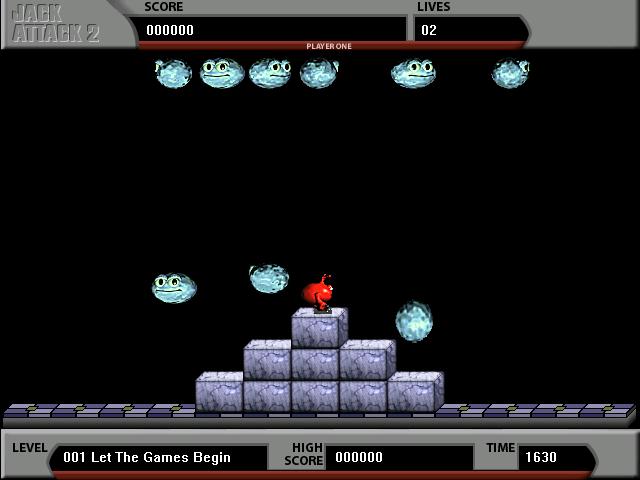
In 1983, Commodore released a game called Jack Attack for the Commodore 64. The object of the game was to maneuver your character, Jack, a rather non-descript looking bug-like character, around a screen made of platforms and blocks while trying to smash monsters. To kill the monsters, you could jump on them or “smush” them by moving the blocks around the screen. I’m guessing that a lot of the readers out there are too young to remember the Commodore 64 computer. In its heyday, it was one of the premier gaming platforms. Looking back, it seems amazing that so many people spent so much time playing a lot of the games for it. They now look really antiquated. Looks, however, can be deceiving. While many of today’s games have graphics that can really drop jaws, many lack the sheer gameplay and fun of many older, less fancy-looking games from the 1980s. Jack Attack was one of those games that lacked graphical prowess, but made up for it in addictive gameplay.
Seris Applications has revived Jack’s quest to “smush” the monsters in Jack Attack 2, an updated version of the original game. Original designer Kevin Kieller is back at the helm, along with some graphics and musical helpers, to reintroduce the game to a new legion of gamers. Does the game still have what it takes to compete in today’s marketplace?
Jack Attack 2, like its predecessor, isn’t much to look at. Jack’s new rendered 3D appearance doesn’t do much to disguise the fact that he’s just a 2D sprite character. The rest of the graphics — what little there are anyway — are simply 2D drawings given a slightly 3D look via shading and perspective effects. And, like its predecessor, the graphics don’t really mean much. The object is still to kill the monsters as fast as possible and gain the platform bonuses.
The player, as Jack, can push and pull blocks to smash the monsters. Jack can also jump on top of the blocks to reach platforms (and to jump on the heads of the monsters.) Some of the platforms are unreachable and the game tempts you to figure out how to reach them before time runs out. Once the timer expires, the platforms disappear, meaning the bonuses obtained by touching them all disappear as well. The meat of the game comes in trying to kill all the monsters while figuring out how to reach those platforms.
A new addition to the game is the cooperation and competition aspect of gameplay. Now, two players can play at the same time, choosing to cooperate or compete for the bonuses in each of the over 100 levels.
Trying to review a game like this poses some odd problems. One of the game’s assets is that it’s so simple to learn, there’s not much to describe. It’s also hard to describe why a simple game like this is fun to play without being able to let you to play it. (Currently, no demo version of the game exists.) So, I’ll boil it down to whether or not the game is worth the money. The answer is, “Yes.” However, there’s a catch. It’s worth it so long as you realize that this isn’t going to make anyone get too excited about the graphics or audio found in the game. It’s a puzzle/action game, not Half-Life. People still buy games like this and the people that do will (or should) find this game to their liking.
6 out of 10.
Tested on: Pentium II 233 MHz, 192 MB RAM, 32X CD-ROM drive, Nvidia TNT 2 w/ 32 MB, Logitech MouseMan mouse, and Windows 98.

